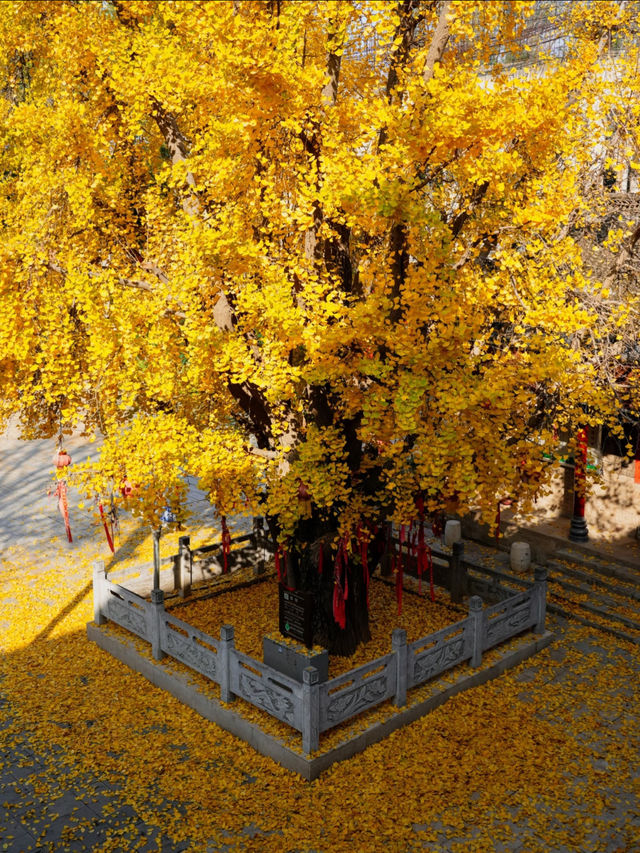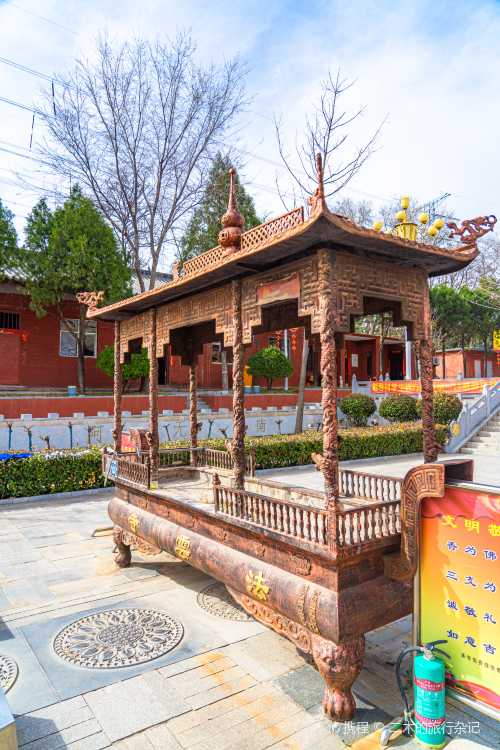Popular Trip Moments
A Millennium of Guardianship in the Sorghum Fields | Zhengzhou Five-Star Hotel Stay Experience | Escape from Zhengzhou 1h | Daxigou Autumn Viewing Guide with Kids | Mount Dengfeng Maple Viewing Essential Guide | The ultimate day trip around Zhengzhou! Complete guide to Xinmi Qinwei Water City | Zhengzhou Xinzheng/Hometown of the Yellow Emperor | Hometown Autumn Pursuit and Shadow Record | Accompanying Songyue: Embarking on a Journey Through a Millennium of Morning Bells and Evening Drums with You | Autumn Journey to Songyue: A Morning Bell and Evening Drum Immersed in Autumn 🍂 | 40 minutes direct from Zhengzhou! Fuxi Mountain private hot spring homestay is so beautiful you won’t want to leave! | After the snow, Songshan Mountain looks like a fairyland—miss it and you'll have to wait a whole year! The Central Plains' version of Frozen | The snow-covered Songshan Mountain is breathtaking! A complete winter wonderland guide | The thousand-year-old Confucian Temple hidden in Zhengzhou's old city! Instantly travel back to ancient ritual times | Snowy Forest Sunset Spectacle, Stunning Snow Scenery of Songshan | A hidden gem in Zhengzhou's old town! The Sino-Islamic aesthetic of a 600-year-old ancient temple is a stunning surprise | Snow Scenery of Songshan | The snow scenery of Songshan is stunning, a fairyland in Central China you have to see or wait another year! | Jiangnan Secret Garden in Zhengzhou: A Family Trip to Zhanyuan Garden | Snowy Mount Song|N Stunning Ways to Explore the Fairyland of Central China! | Songshan after snow is a must-visit! Instantly travel to a martial arts fairyland, breathtakingly beautiful! | The snow-covered Songshan Mountain is stunning beyond words! You don't have to go to Changbai to see breathtaking snowy scenery | Successful reverse travel during National Day! 5 days and 4 nights exploring an autumn secret realm wilder than Zhangjiajie | After the snow on Songshan, enjoy the exclusive breathtaking secret realm of the entire ice and snow kingdom | The Snowy Wonderland of Songshan Revealed! Miss it and wait another 365 days | Today's snowfall, Songshan after the snow is the most magical way to experience it | Climbing to the Top of Songshan: A Snowy Wonderland | Snowy scenery of Songshan, as beautiful as a fairyland | The snow-covered Songshan is stunning! The perfect time to unlock the fairyland of Central China | The snow-covered Songshan Mountain is breathtakingly beautiful—this is the Central Plains' version of Frozen | An Underrated Off-the-Beaten-Path City! 5-Day Parent-Child Hiking Route + Hidden Activities
Recommended Attractions at Popular Destinations
Popular Attractions in Bangkok | Popular Attractions in Kuala Lumpur | Popular Attractions in Dubai | Popular Attractions in Chefchaouene | Popular Attractions in Kyoto | Popular Attractions in Los Angeles | Popular Attractions in Bali | Popular Attractions in Shanghai | Popular Attractions in Iguazu National Park(Argentina) | Popular Attractions in New York | Popular Attractions in Paris | Popular Attractions in Walt Disney World Resort | Popular Attractions in Melbourne | Popular Attractions in London | Popular Attractions in Singapore | Popular Attractions in Beijing | Popular Attractions in Las Vegas | Popular Attractions in Rome | Popular Attractions in Zanzibar Island | Popular Attractions in Sydney | Popular Attractions in West Lake | Popular Attractions in Osaka | Popular Attractions in Tokyo | Popular Attractions in Phuket | Popular Attractions in Barcelona | Popular Attractions in Madrid | Popular Attractions in Chengdu | Popular Attractions in Florence | Popular Attractions in Istanbul | Popular Attractions in Jungfrau Region
Popular Restaurants in Zhengzhou
Dolar Shop ( Da Wei Cheng ) | Jing Xiang HuiMian | Shi Jia Niu Ba Cheng | UNDER THE MOON CUISINE | Fang zhong shan Soup With Pepper (Shunhe Road) | MAO FU CHAO YAN | XIE'S KITCHEN | Wu Shun Zhai Halal Roast Duck ( Wen Hua Road Fen Dian) | GE JI | OLD YARD FOLK DISHES | WUSHIMINGCHU HENAN RESTAURANT | 帖老大羊肉汤烩面烧烤(康复后街总店) | JOINSCLUB | Xiao Ji San Xian Hui Mian ( Zheng Bian Road dian ) | Lu Xiao Ge Barbecue | 四厂烩面(棉纺路店) | Heji (renminlu) | Yueliyijing Western Restaurant (dashanghaicheng) | Cheng Qiang Gen Henan's Old Tea House | QING YAN | HENANSHIFU | Laocaiji (erqiguangchang) | Yu Ya Yuan | QIANXI CLOUD RESTAURANT | Akebono | Gougou Mutton Soup Restaurant | 肖家饸饹面总店(郑州总店) | SONG SHAN BU YI BAN Aquarium Banquet Restaurant | 惠丰源烩面馆(经七路店) | BAI NIAN BAI GANG
Popular Ranked Lists
Popular Premium Hotels in New Hampshire | Top 20 Trending Attractions in Wuhan | Popular Trending Attractions in Los Angeles | Top 50 Must-Visit Restaurants in Milan | Popular Premium Hotels in Ribandar | Top 10 Trending Attractions in Bangkok | Top 20 Trending Attractions in Xi'an | Top 50 Luxury Hotels near Songkhla | Popular Premium Hotels in West | Top 50 Must-Visit Restaurants in Paris | Top 10 Trending Attractions in New York | Top 50 Luxury Hotels near Klagenfurt | Top 50 Must-Visit Restaurants in Nanjing | Popular Premium Hotels in Exeter | Popular Premium Hotels in Thu Dau Mot | Top 50 Luxury Hotels near Innsbruck | Popular Trending Attractions in Osaka | Top 10 Luxury Hotels near Tomigusuku | Popular Premium Hotels in Gwynedd | Popular Trending Attractions in Bali | Popular Trending Attractions in Guiyang | Top 50 Must-Visit Restaurants in Melbourne | Popular Premium Hotels in La Guaira State | Top 10 Trending Attractions in Kyoto | Top 50 Must-Visit Restaurants in Dubai | Top 50 Must-Visit Restaurants in Los Angeles | Popular Trending Attractions in London | Top 50 Must-Visit Restaurants in Rome | Top 50 Must-Visit Restaurants in George Town | Popular Premium Hotels in Sighnaghi
About
Payment methods
Our partners
Copyright © 2025 Trip.com Travel Singapore Pte. Ltd. All rights reserved
Site Operator: Trip.com Travel Singapore Pte. Ltd.
Site Operator: Trip.com Travel Singapore Pte. Ltd.
















